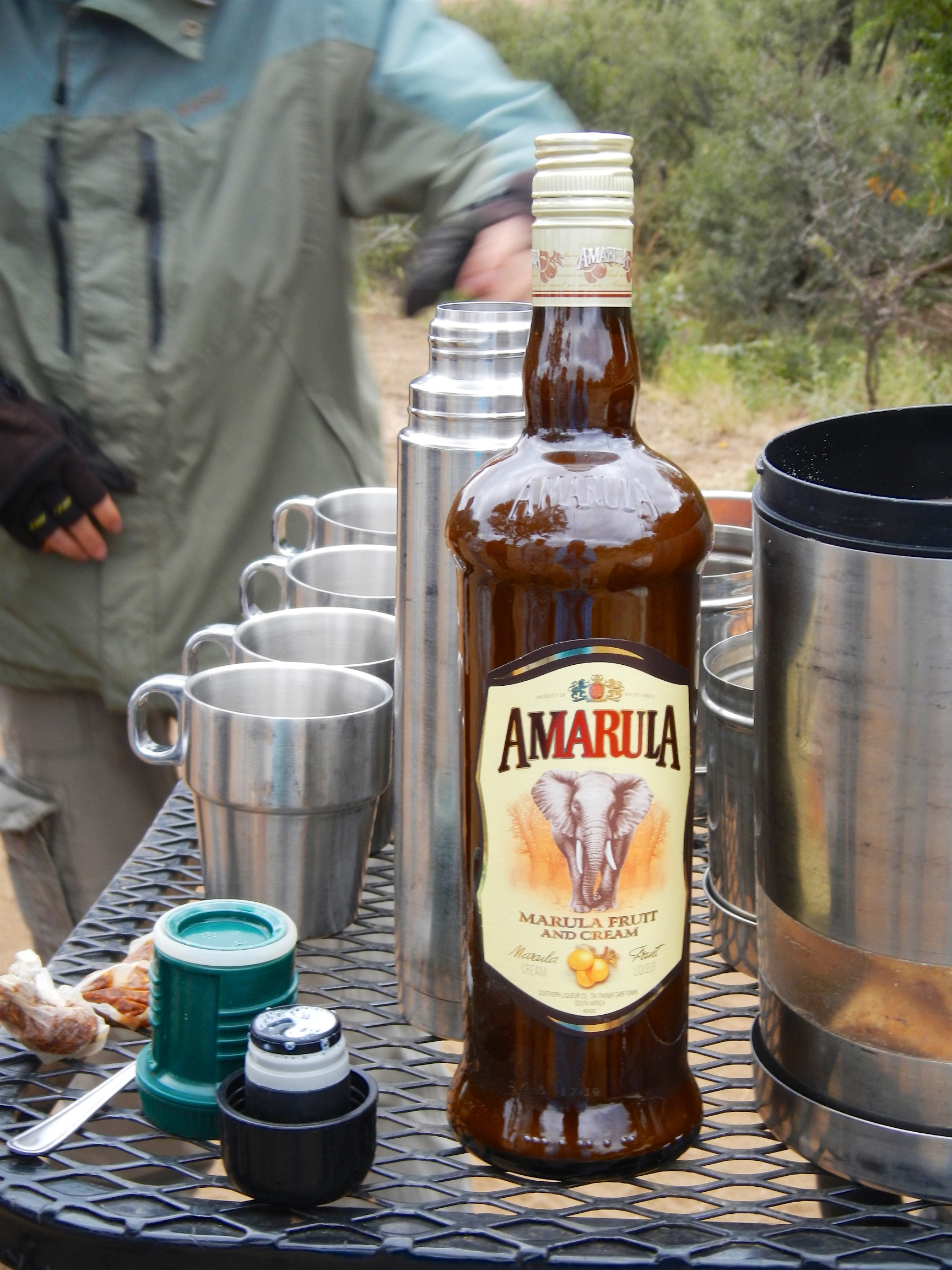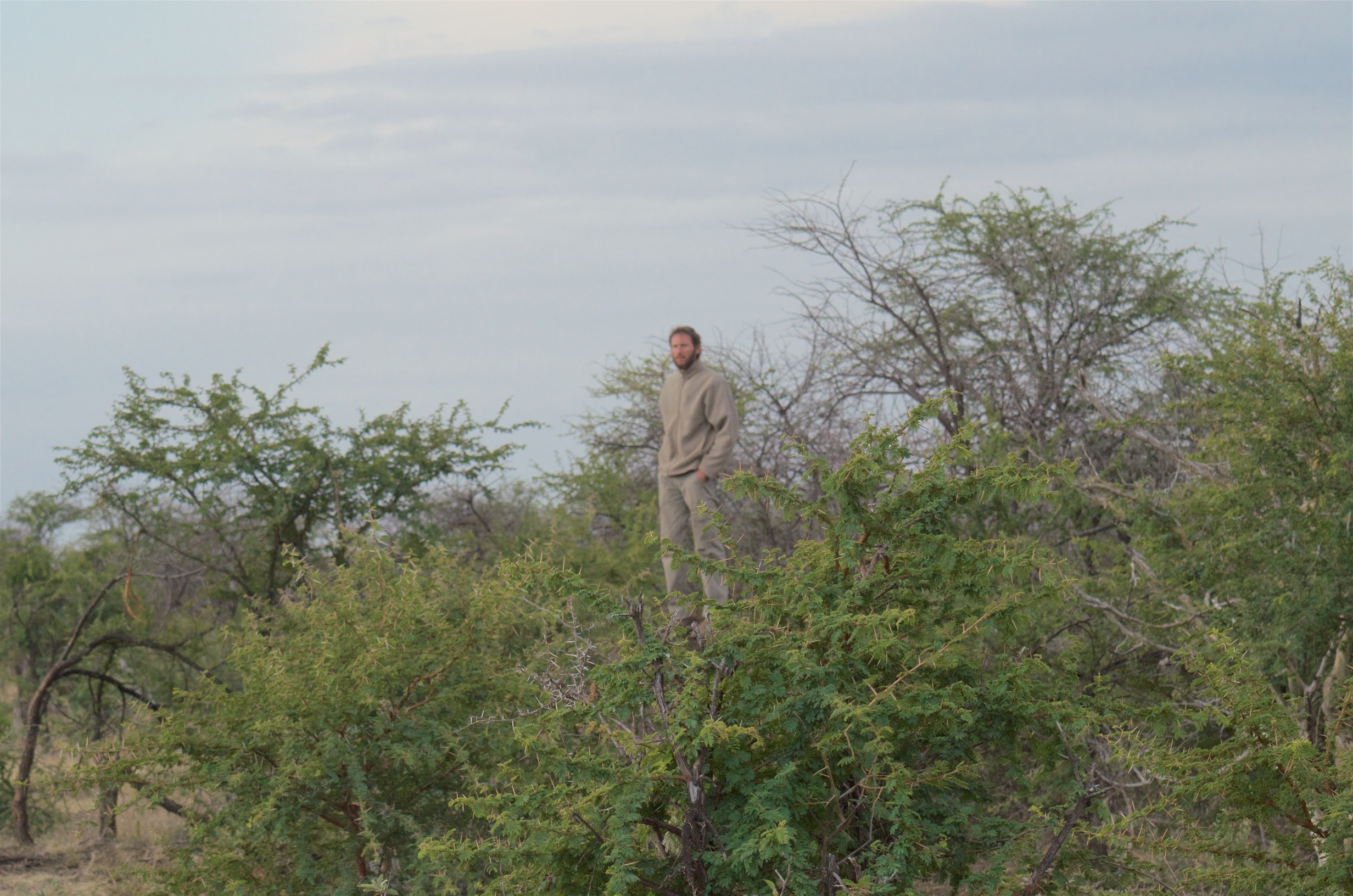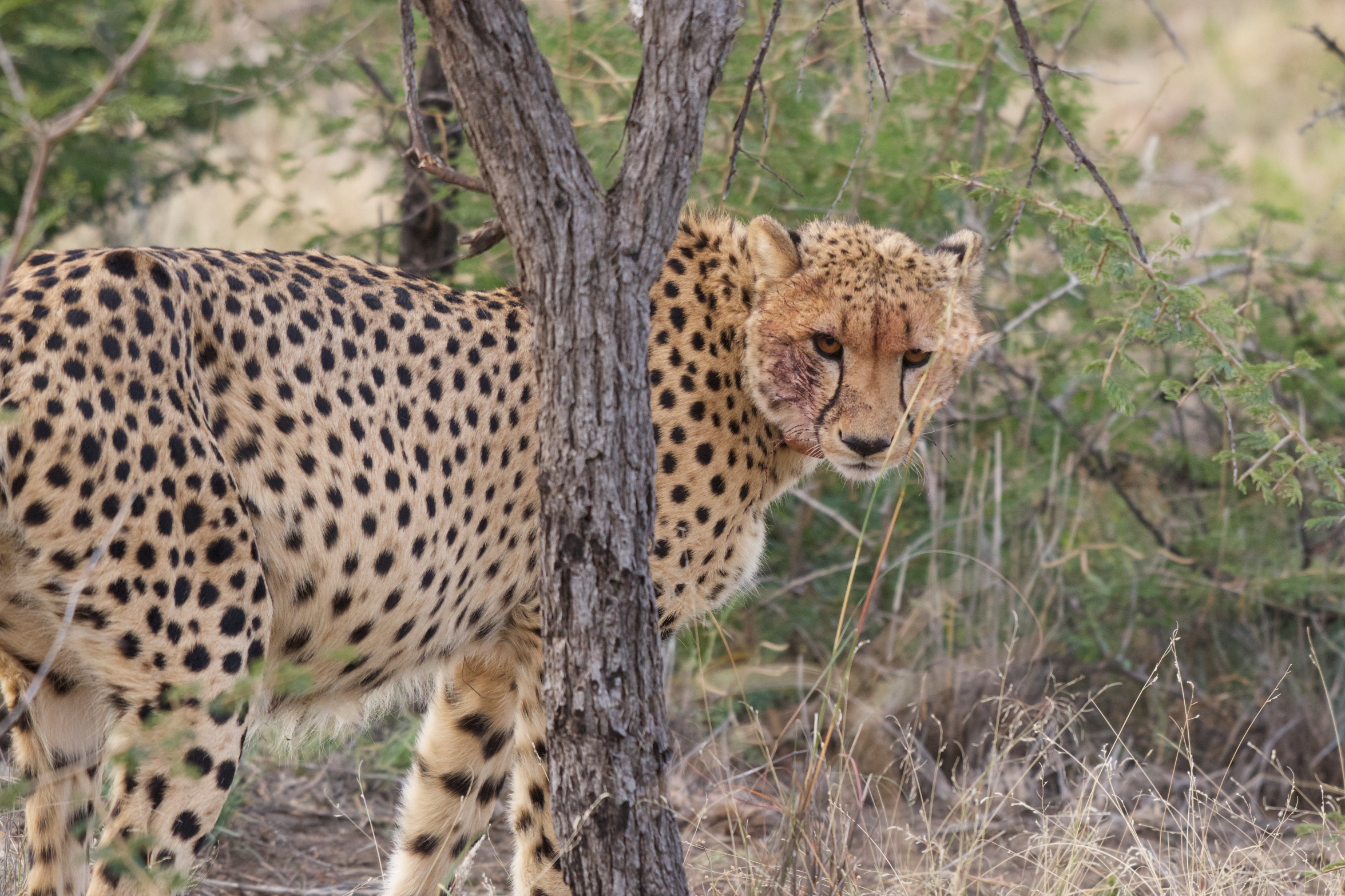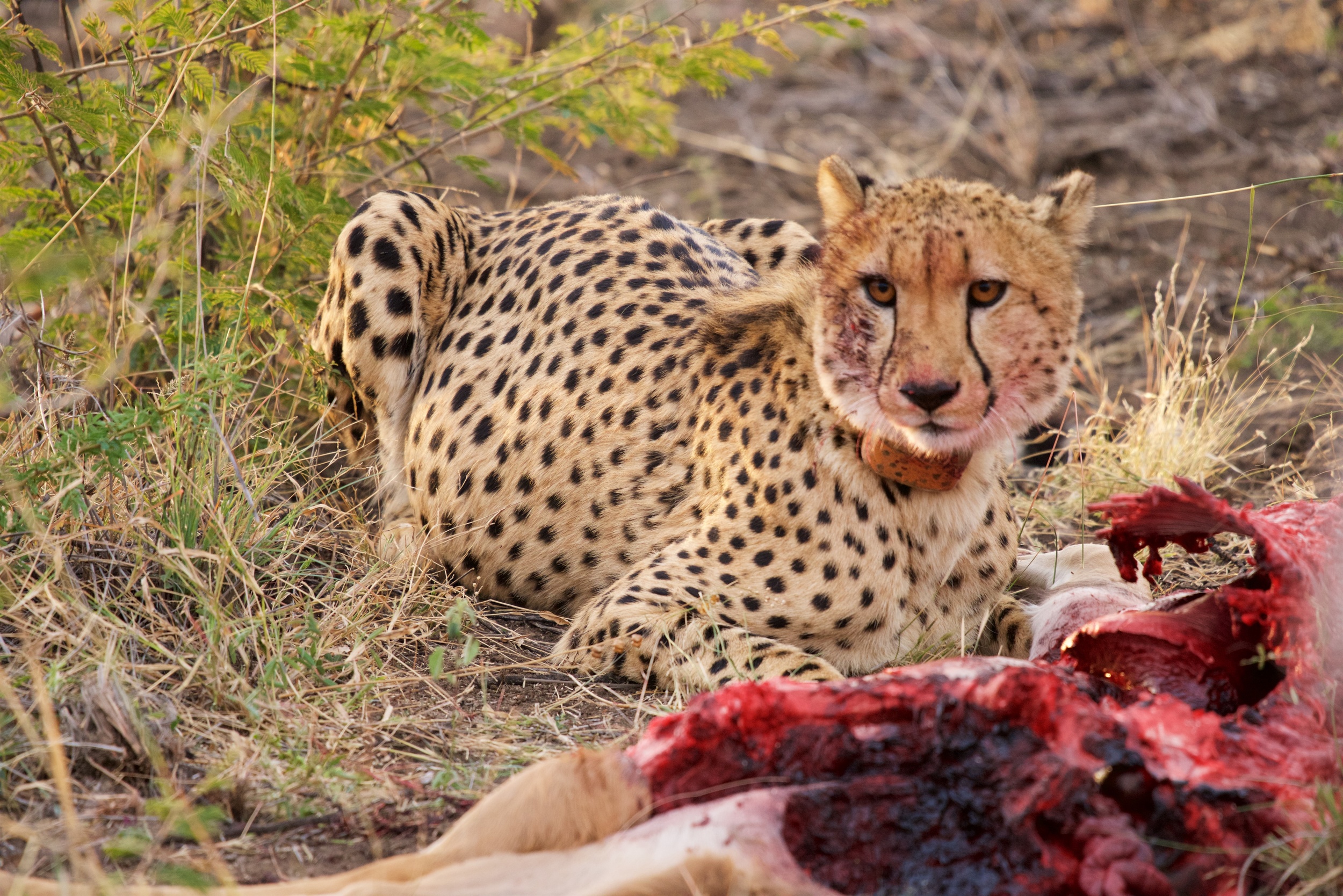For the first time since we arrived in Africa we arose to find cloudy and quite windy conditions and the forecast was for this to continue although we’re informed that there’s little prospect of rain.
In darkness we set out on our early morning safari trip and it became apparent very early that these weather conditions are not conducive to much animal activity. At the big dam site we saw nothing of note and to keep warm the ubiquitous impalas were seen to be huddling in groups gaining protection from the scrubby undergrowth.
There were wildebeest out and about but giraffes and elephants were only seen in the distance.
While winding our way along a flat dusty pathway among the prickly acacias we had a surprise encounter was a female ostrich. She came quite close to take a look at us and one gained the impression that she was quite inquisitive although grazing was her main preoccupation.
Ostrich (female)
Ostrich
Francois drove us further northeast towards the Marico River which in part serves as a boundary to the Madikwe Game Reserve. Lying on the riverbank was a lion sound asleep with the remnants of an animal carcass nearby. There were three other members of the pride close by partially hidden in the dense forest area.
Lion sleeping by Marico River
Corinne & Jak in safari jeep
We watched this sleeping beauty for ten minutes and during this time he barely moved his head and from the swelled belly one could imagine that he had recently partaken of a huge meal.
As we were about to leave we frightened a lone black-backed jackal that was skirting the periphery hoping for some food scraps left over from the lions’ feast. These attractive animals (Canis mesomelas) have an interesting family life whereby they mate for life and jointly share the roles of raising their young. They live in a den where food is shared equally and the pups are fed by regurgitation. They are courageous animals and have been known to kill and remove a newborn lion cub while the mother was recovering from giving birth!
The offspring usually stay with their parents and assist in the raising of the next litter by which time they are mature and seek independence. One of their key roles as assistants is to keep guard at the den and fend off predators by nipping at their haunches. Their family structure has led to breeding success and consequently their numbers have increased in recent times.
After this unexpected lion viewing session we spent time at a ford on the Marico River and photographed namaqua doves, pied lapwings, wagtails and kingfishers.
We had a coffee stop by the riverbank and with the cold conditions we laced our coffees with Amarula liqueur; which proved to be a very good choice.
Amarula for morning coffee by the Marico River
In the afternoon we travelled south eastwards in cool, windy and cloud covered conditions. As Francois has said earlier, this weather is not likely to bring about much activity amongst the larger animals or even the birds and he was quite correct.
For the first hour we saw very little activity and apart from a few impalas and a herd of buffaloes things were very quiet.
Then, out of the blue came a message on the radio that a leopard had been seen nearby. Francois accelerated and raced along the dusty track to where the leopard had been seen. Alas, we were too late and this big cat had moved on. (Joke: this proved to be an unusual leopard as it wasn’t spotted!!)
With a sense of disappointment we moved on to another area where it was reported that two cheetahs had been sighted earlier in the day. Francois left us in the 4WD and went off searching for spoor (footprint) information for about 20 minutes. He returned to our vehicle with glad tidings; he had found the two cheetahs just a few hundred metres away.
Francois looking for cheetas
We then spent the next 45 minutes observing these graceful big cats that were totally involved in eating a young kudu. Our presence in the truck just 10m away made no difference to them and they kept eating as if we were not even there.
These two cheetahs are brothers and there are presently only three cheetahs in the reserve.
Cheetah
Cheetah
Cheetah with kill
Cheetah resting after feed
These animals are famous for their speed being the fastest land animal on the planet. They can reach a speed of 118km/h when fully extended. Having non-retractable claws enables rapid acceleration and quick stopping somewhat like an athlete’s running spikes. They can stop from 30km/h in a single stride.
There is a combination of anatomical peculiarities that enable a cheetah to achieve such extraordinary feats. Their hind legs are brought forward to completely straddle their forelegs when running and their spines are flexible enabling then to withstand the incredible stresses of their incredibly fast movement. They have a disproportionately large heart and have heartbeats ranging from 16 at rest to 156 beats per minute when hunting. This is needed to supply the necessary oxygen for this dramatic pace when in pursuit of prey.
Sadly cheetahs are the most endangered of the big cats and have suffered dramatically by loss of habitat and their vulnerability to disease. Their numbers are still thought to be on the decline despite efforts to conserve these beautiful cats.
Sundowners
On the way back to Leopard Rock Lodge we saw a journey of 12 giraffes quite near the roadside and later, nearer home, using the spotlight we saw a large herd of elephants.
The day had two key sightings for us; namely an ostrich and the two cheetahs. We have been so fortunate!











